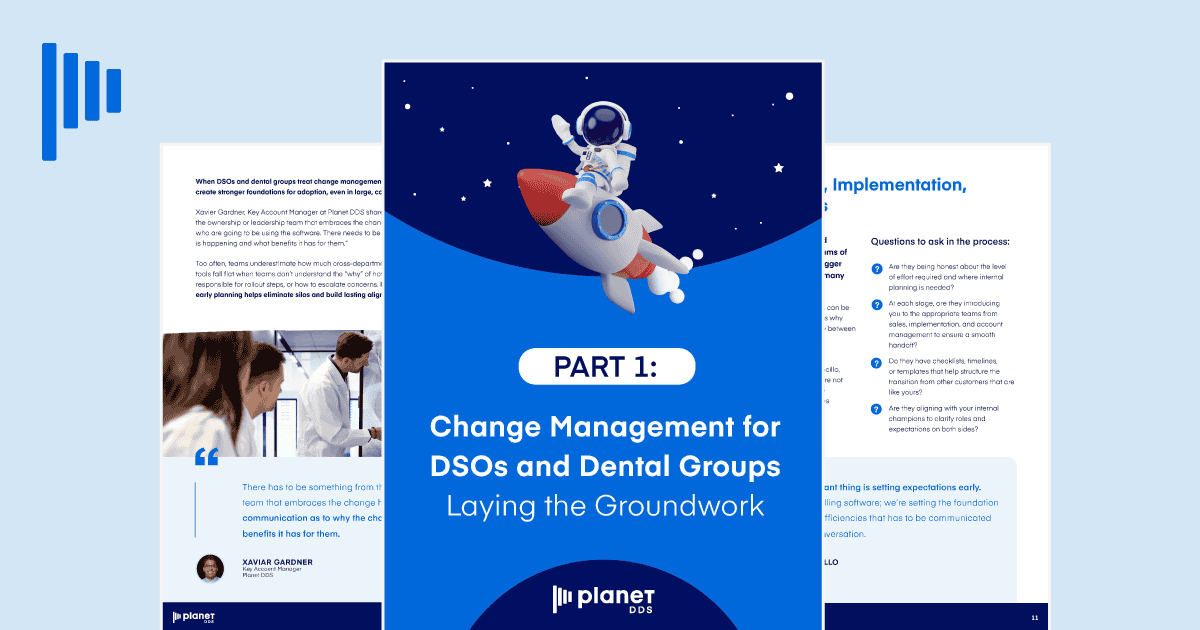Navigating Consolidation: Top Strategies for Dental Practices

75% of Dental Practices Will Consolidate in Ten Years
High interest rates have slowed dental mergers and acquisitions (M&A) in 2024, but the wave of rapid consolidation is coming. “I predict that 75% to 80% of dental practices will be consolidated in ten to fifteen years,” said Brian Colao, the director of the Dykema DSO Industry Group and the leading expert on mergers and acquisitions in the U.S. dental industry.
Currently, about one-third of dental practices are consolidated, a trend that started in 2010, and then took off in 2015 when it was easy to get financing. This trend continued until 2022 when higher interest rates impacted mergers and acquisitions.
Now, private practice owners are feeling the squeeze from stagnant insurance carrier reimbursements combined with higher employer salaries, supply costs, lab fees, and interest rates. That has many considering selling their private practices to a dental group. To prepare, they’re looking for ways to increase their revenue so they can be attractive to buyers.
Dental M&A Trends: Seeking Practices with 20% EBITDA
“DSOs are seeking to affiliate with practices that have greater than 20% EBITDA, are willing to roll equity, and where the owner dentist will stay on for at least five years,” said Chris McClure, co-founder of Aligned Dental Partners, which provides M&A advisory and consulting services to group practices.
There are two ways to increase EBITDA (earnings before interest, taxes, depreciation, and amortization). The first is by cutting costs. The second is by increasing revenue.
Many dental practice owners cut costs in these ways:
- Renegotiate supply costs or changing vendors
- Renegotiate insurance carrier fee schedules
- Reduce remakes and renegotiate lab fees
- Reduce headcount through layoffs, outsourcing, and temporary employees
- Audit all of the services currently used and eliminate duplicate or rarely-used services
“You can’t cut your way to profitability though,” said Brian Colao. On the Planet DDS webinar called All Things DSO, Colao stated, “The only thing you can do to really turn the tide if you’re heavily exposed to interest rates is you can try to refinance. If that’s not something available to you, then you have to increase same-store growth. You’ve got to increase your revenue to offset the additional expenses.”
4 Strategies to Increase Dental Practice Growth
So how do individual practices stay intact and grow? Many dental practices are turning to technology, patient behavior, and workflow adjustments to increase revenue. Here are four ways your business can achieve optimal growth:
1. Maximize technology.
Many dental offices choose to standardize operations, increase efficiency, and automate time-consuming tasks with dental practice management systems. These features include integrated online scheduling, digital forms, automated appointment reminders, automated payment reminders, automated benefits eligibility checks, built-in revenue cycle management (RCM) functionality and auto-posting, integrated digital imaging, two-way texting, integrated digital imaging, analytics and real-time reporting, and more.
2. Increase treatment acceptance.
Implementing various strategies can significantly increase treatment acceptance in your dental practice. These include leveraging artificial intelligence (AI) for X-ray analysis to provide detailed explanations to patients, offering same-day procedures with on-premise milling and 3D printing, scheduling follow-up appointments before patients leave, and sending automated text reminders to those with outstanding treatment needs.
3. Streamline procurement management.
This strategy can substantially enhance the efficiency and cost-effectiveness of your dental practice. E-procurement management companies allow dentists to order supplies and materials through an established formulary, ensuring consistency and quality while keeping costs lower. By automating the procurement process and negotiating bulk purchase agreements, these services can reduce administrative burden and lead to significant savings on essential supplies.
4. Increase collections.
Make it easier for your patients to pay by using technology like text-to-pay reminders, customized payment plans with automatic withdrawals, and online payment options. Utilize a cloud-based practice management system to run real-time reports, identify patients with outstanding balances, and send automated email and text message reminders.
Future-Proof Your Dental Practice
Despite the slowdown in mergers in the first half of 2024, it’s now the time for private practice owners to start thinking about the future. “It’s going to happen,” said Colao. “Whether you’re thinking about partnering with a group this year, next year, or a decade from now, you can put yourself in the best possible position by preparing now.”
As dental practices face increasing consolidation, their future will hinge on their ability to adapt and innovate. By adopting advanced technologies, streamlining operations, and enhancing patient engagement, practices will be able to remain competitive and thrive. Prepare now by implementing new strategies to ensure long-term success and sustainability in your industry.



